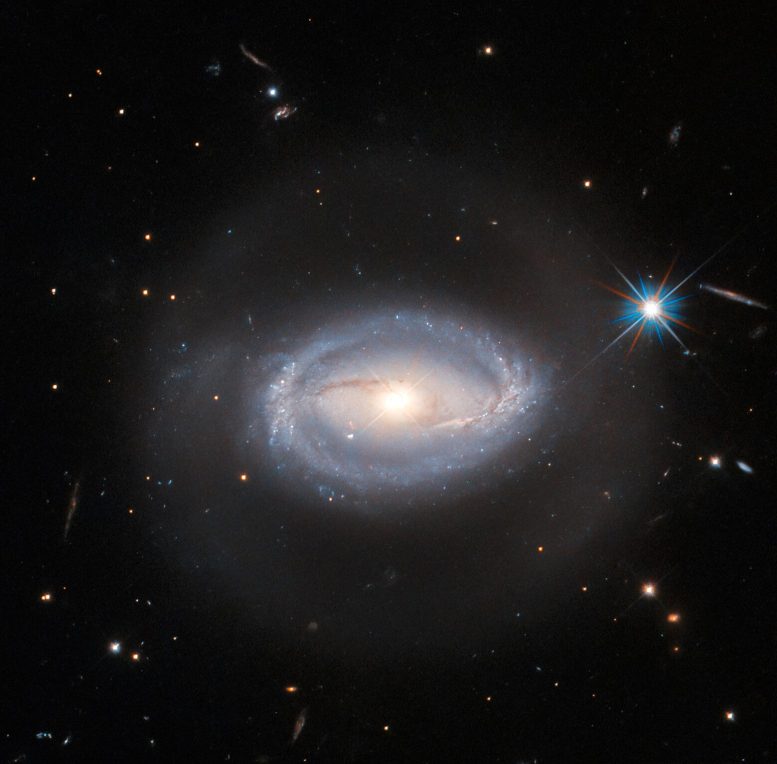
Hubble Space Telescope image shows Z 229-15 in beautiful detail. This celestial object that lies about 390 million light-years from Earth in the constellation Lyra. Credit: ESA/Hubble & NASA, A. Barth, R. Mushotzky
This luminous NASA/ESA Hubble Picture of the Week shows Z 229-15 — imaged here in exquisite detail by the Hubble Space Telescope — a celestial object that lies about 390 million light-years from Earth in the constellation Lyra. Z 229-15 is one of those interesting celestial objects that, should you choose to research it, you will find defined as several different things: sometimes as an active galactic nucleus (an AGN); sometimes as a quasar; and sometimes as a Seyfert galaxy. Which of these is Z 229-15 really? The answer is that it is all of these things all at once, because these three definitions have significant overlap.
AGNs and quasars are both described in detail in the links provided here, but in essence, an AGN is a small region at the heart of certain galaxies (called active galaxies) that is far brighter than just the galaxy’s stars would be. The extra luminosity is due to the presence of a supermassive black hole at the galaxy’s core. Material sucked into a black hole actually doesn’t fall directly into it, but instead is drawn into a swirling disc, from where it is inexorably tugged towards the black hole. This disc of matter gets so hot that it releases a large amount of energy across the electromagnetic spectrum, and that’s what makes AGNs appear so bright.
Quasars are a particular type of AGN; they are typically both extremely bright and extremely distant from Earth — several hundred million light-years is considered nearby for a quasar, making Z 229-15 positively local. Often an AGN is so bright that the rest of the galaxy cannot be seen, but Seyfert galaxies are active galaxies that host very bright AGNs (quasars) while the rest of the galaxy is still observable. So Z 229-15 is a Seyfert galaxy that contains a quasar, and that, by definition, hosts an AGN. Classification in astronomy can be a challenge!

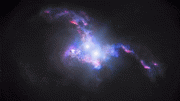
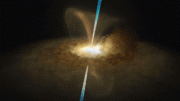
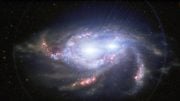
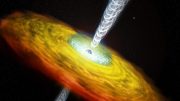
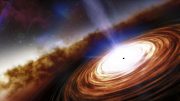
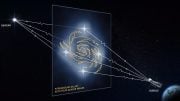
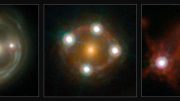
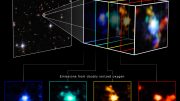
This is such a beautiful display of the Divine Creators magnificent work. This is far beyond mere mortal most expansive imagination. I fully realize that what is on display is but a thumbnail display of what is currently available to our view.
PROVE IT, physically PROVE IT. “Divine Creators magnificent work”
You have Zero Evidence, just as there is ZERO evidence of ANY “god”.
Much in the same way that you have Zero Evidence, big guy. Sorry this person isn’t as unraveled as you are inside. Who on earth do you think you are pretending like youre demanding it proven to you, chump? Mind your business and stop being a bleeding cry baby. They know what they know, because they do. Your superiority complex is making an ass of you.
Milt’s trying to imply that no human with a better understanding of gravity could cancel out all the spooky eyeball mystery vapor emitted from the standard god-nut when it comes to appreciating galaxies like this, and on that point Miltie appears to be 100% wrong. Utimately it’s an IQ issue about a fascist ego game, so no point in pushing it too hard here.
was going to look at a photo that from the title of the article would be from James Webb space telescope but instead it was a composite image from a ground based telescope, that could show more than Webb from the ground. and it doesn’t make sense that we’re shown newly edited photos that Hubble shared and the large ground telescopes, and the launch of Webb went into simulation mode almost immediately and simulator means fake so can’t believe the photos knowing JWST isn’t actually in space
Whenever I see a flat galaxy with hints of a single ringlike region, I always look for faint hints of a second ring at twice the distance to the center. It has to do with a prediction of adding pitch rotation to Newton’s inverse-square rule for gravity expressed in vector field carriers. With the correct quantum gravity simulation rule, many of the most beautifully balanced galaxies will be shown to be notably stable configurations.
Please do not waste my time responding to this if you are going to foolishly pretend anything in my comments is jargon or “word salad.”
Maybe I should refer to the pattern obtained by multiplying Newton’s inverse-square rule, expressed as a radiative “true vacuum” gravitational information carrier flow, by a complex function expressing a “pitch” type of rotation for these carriers.
The pitch rate derives from fundamental properties of fundamental particles of matter, namely it is the product of effective proton size (approximately ten to the -15th power, in meters) and the immediate dimensionless ratio between charge/mass forces between two protons (approximately ten to the +36th power). The simple logarithmic math (36-15=21) conveniently sets the pitch size at 1,000,000,000,000,000,000,000 meters if carriers are simple dipoles, half that if fundamental carrier geometry is that of opposing paired dipoles (resembles a two-ended open object, like a short positive energy winding tube in form, stuffed with true vacuum).
If there is anything valid about holographic gravity, ultimately at the point-like representational level it’s the concept of representing a black hole observation as a practically-pointillist expression of near-Planck-scale construction.
At the wave-like representational level a holographic gravity perspective best matches individual cycles of the above-described galactic scale wave feature. One might think of this non-dynamic matter-based wave as a vacuum washboard ripple gravity landscape focused on supermassive galactic centers, superimposed on a Newtonian gravity well, if that helps.
Ah,yea. That’s my body that you have been phographing.quite frankly my health is in decline. Universal catastrophe eminent. My name is Darren Pritchard sultan WA. USA 4259810628. You should call me.
Hi,I’m leprechauns 410 #4
Clear lollipops
Sun m moon
My beautiful Eyes under this eyebrows ..
Catalina Moon Pride
3 flag
I contact…👁️🍀🌈☄️🌠🐠🦀🥔🚓🎠🗽🏛️🪙💎🛰️🔭📐🚬🛡️♒✴️⚜️🅿️🆕🆒4️⃣🔟⚛️☸️☯️☪️✡️🔯♾️♦️©️🏳️🌈 #1 Corporation o
Hi,I’m leprechauns 410 #4
Clear lollipops
Sun m moon
My beautiful Eyes under this eyebrows ..
Catalina Moon Pride
3 flag
I contact…👁️🍀🌈☄️🌠🐠🦀🥔🚓🎠🗽🏛️🪙💎🛰️🔭📐🚬🛡️♒✴️⚜️🅿️🆕🆒4️⃣🔟⚛️☸️☯️☪️✡️🔯♾️♦️©️🏳️🌈 #1 Corporation oF Long Beach Police Department ….5/4/89 birth
Exclusive Lesbian
Traditional Lesbian
Green Bee
Monocerotids
4oros-Catalina Island
Clear lollipops or Eye Candy…510
Santa Claus….
Micro- hundreds – guinea
New Zealand
New Syberia
911 law enforcement calls
Eyes on Asteroids
Civilization of Ancient Pyramids…is me 1 person
My eyes…camaras representative also..
You should ♤♡◇♧♡♤$$$$$ hot 🔥🥵¤